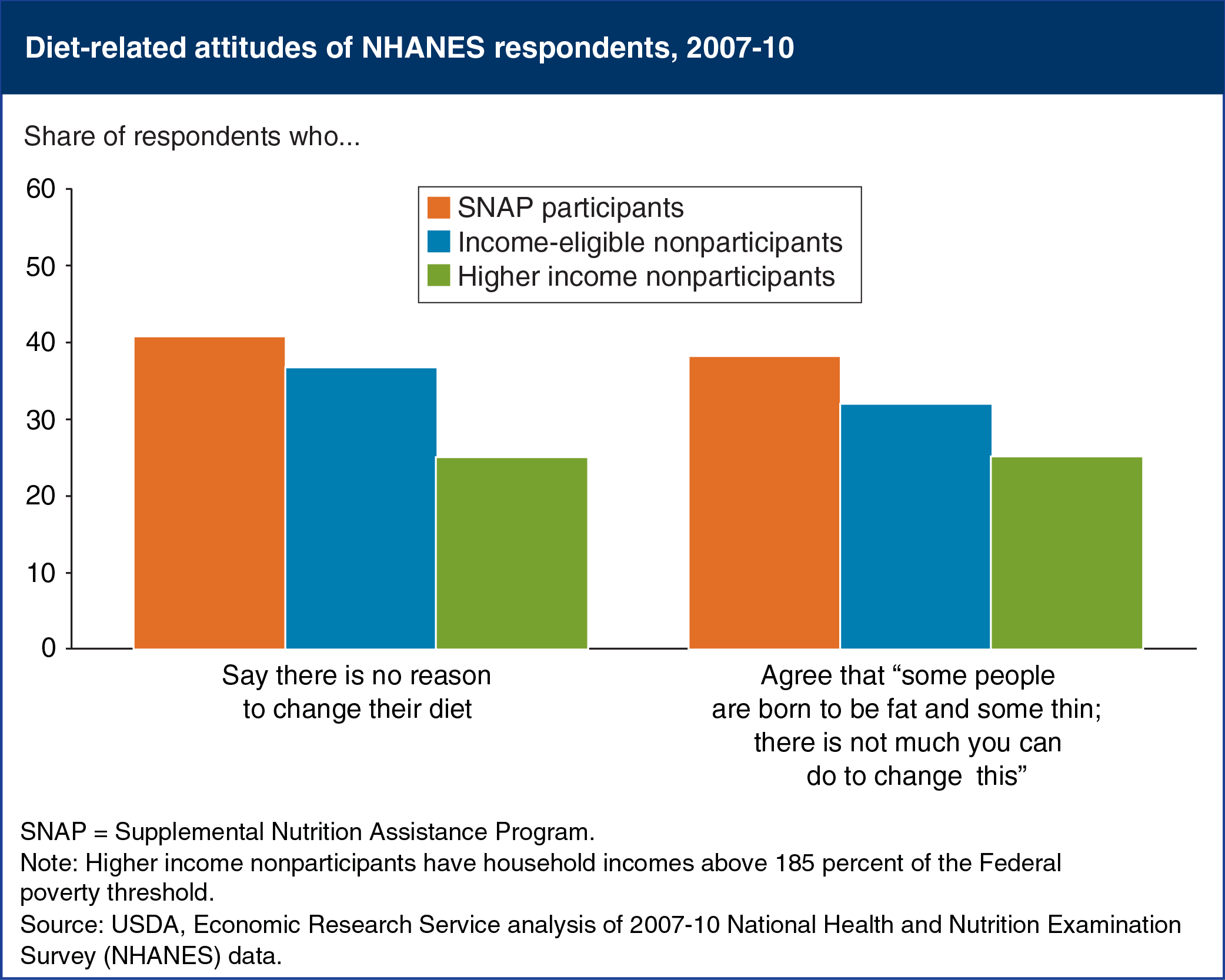Motivating Americans to make dietary changes continues to be a challenge
- by Lisa Mancino and Joanne Guthrie
- 3/6/2015

Research has shown that participants in USDA’s Supplemental Nutrition Assistance Program (SNAP) tend to consume lower quality diets than nonparticipants. Pessimism about the value of dietary change may be one of the culprits. Analysis of responses to questions in the Flexible Consumer Behavior Survey module of the National Health and Nutrition Examination Survey (NHANES) found that 40 percent of SNAP participants indicated that they felt no need to change their diets; in contrast, only 25 percent of higher income shoppers felt no need to make dietary changes. (Higher income adults are those with household incomes above 185 percent of the Federal poverty threshold.) SNAP participants were also more likely than other respondents to agree with the statement "some people are born to be fat and some thin; there is not much you can do to change this.” This may indicate differences in perceptions of self-efficacy among SNAP participants compared to higher income shoppers. Alternatively, it may be that the other stresses of living in poverty make maintaining diet and health as a top priority more difficult. This chart appears in “SNAP Households Must Balance Multiple Priorities to Achieve a Healthful Diet” in the November 2014 issue of ERS’s Amber Waves magazine.

